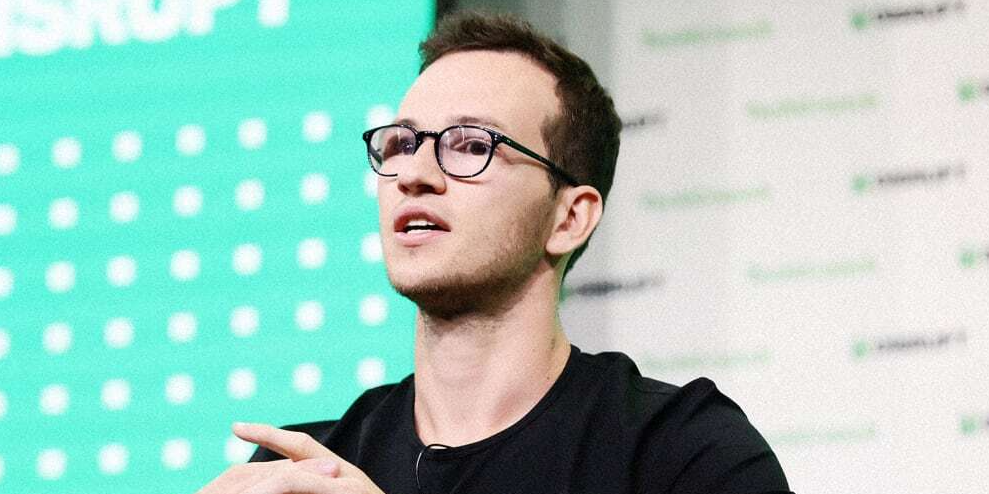The fintech startup saw an opportunity to help fellow SVB clients in its own way: through an emergency bridge credit line
Two weeks ago, on what seemed like a typical Wednesday, Brex cofounder and co-CEO Henrique Dubugras discovered something curious: a “weird” amount of inflows to deposits, as Brex’s enterprise customers moved cash onto the platform.
Brex, a six-year-old startup worth $12.3 billion, offers spend management solutions for businesses, including cash accounts that can be used to pay bills and fund payroll. Though Brex now serves large companies, it got its start serving fellow Y Combinator participants; tech startups remain a significant portion of its customer base.
Later that day, Dubugras got a couple of text messages about Silicon Valley Bank: there were rumors that the storied Silicon Valley institution could be in trouble. Brex banked with SVB, and Dubugras knew it well. He also knew that there had been questions about its risk profile for months. Back in November, one of Brex’s investors and board members, Greenoaks managing partner Neil Mehta, had sent an email to his portfolio companies outlining his concerns about SVB’s exposure to higher interest rates.
Dubugras thought that real trouble was unlikely, but the rumors explained the inflows to Brex cash accounts. He started making calls.
“People that understood a lot about banking said, ‘they’re fine,’” Dubugras recalls of his conversations about SVB.
As a precautionary measure, he and his cofounder and co-CEO, Pedro Franceschi, decided to move some of the cash in Brex’s SVB account to another bank, reasoning that they could reverse the wire just as easily when the rumors had quieted down.
After that, things started happening very quickly.
Panic spread on WhatsApp and Twitter as founders realized that their cash could be in peril if SVB were to collapse. Roughly 90% of SVB’s deposits were uninsured, meaning they exceeded the $250,000 that the Federal Deposit Insurance Corporation typically guarantees. On Thursday, SVB customers initiated $42 billion worth of withdrawals. Regulators swooped in as the bank teetered, placing it in FDIC receivership by midday on Friday.
Inside Brex, teams were scrambling. Billions of deposits continued to pour in. Thousands of businesses were applying for customer accounts (over the course of the week, Brex would add 4,000 customers to its ranks, and $2 billion in deposits). Zoom and Slack became Brex’s virtual war room.
“Every five minutes we had a call scheduled,” Dubugras says.
Among founders affected by SVB’s collapse, one immediate concern loomed large: making payroll. Hedge funds were offering to pay companies 60 cents to 80 cents on the dollar for their SVB deposits—for the companies, an expensive lifeline. Some investors were making personal loans. Brex saw an opportunity to help in its own way, through an emergency bridge credit line. By Friday afternoon, the credit line was operational.
Ron Gorodetsky, cofounder and COO of fintech startup Hubly, first heard about Brex’s emergency credit line through a WhatsApp group chat. Hubly had initiated a wire to transfer funds out of SVB, but didn’t know if the wire would clear. If it didn’t, Gorodetsky wasn’t sure how the company would make payroll in time for its midweek deadline. Hubly needed a Plan B, and time was of the essence.
“Payroll was top of mind for every officer of a company that was impacted, because you understood fairly quickly that you were criminally liable for that payroll going out,” Gorodetsky says.
Traditional banks can take over a week to open a business account. Brex, meanwhile, has digitized account-opening processes like KYC, or Know Your Customer, making it far more nimble.
“We realized the speed of onboarding was going to be to us, especially going into a weekend where traditional institutions were going to be doors-closed until Monday,” Gorodetsky says. Brex looked like their best shot.
By the end of the weekend, when the Federal Reserve, the Treasury Department, and the FDIC released a statement that “depositors will have access to all of their money,” effective Monday, Hubly had already completed its Brex onboarding.
The banking system jitters continued over the week that followed SVB’s collapse. Dubugras powered through alongside the Brex team, and then slept for two days straight.
“It’s been a while since I worked a 100-hour week, and that was a real 100-hour week,” he says.
As the dust settles, he expects startups to think more carefully about their money management (perhaps using Brex’s offering, for example, which spreads customer funds across multiple banks in order to achieve FDIC coverage up to $6 million). He’s also optimistic that SVB will live to see its next act, in one form or another. On March 16, Brex announced that it had moved $200 million of its corporate funds to Silicon Valley Bridge Bank, the entity operated for now by the FDIC.
“Before, every fintech [startup]was trying to be like a bank, and that generated trust,” he says. “The landscape is changing.”
ENDS
—
This article first appeared https://www.fastcompany.com
Seeking to build and grow your brand using the force of consumer insight, strategic foresight, creative disruption and technology prowess? Talk to us at +971 50 6254340 or engage@groupisd.com or visit www.groupisd.com/story



